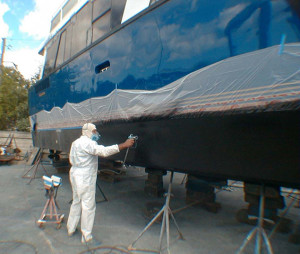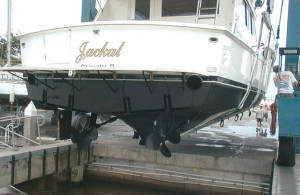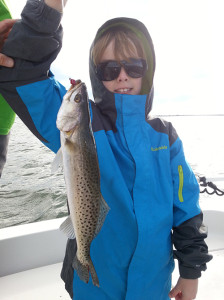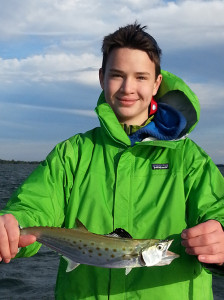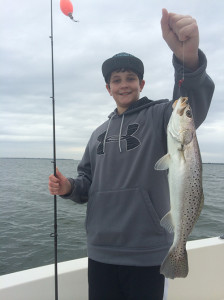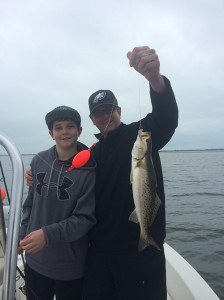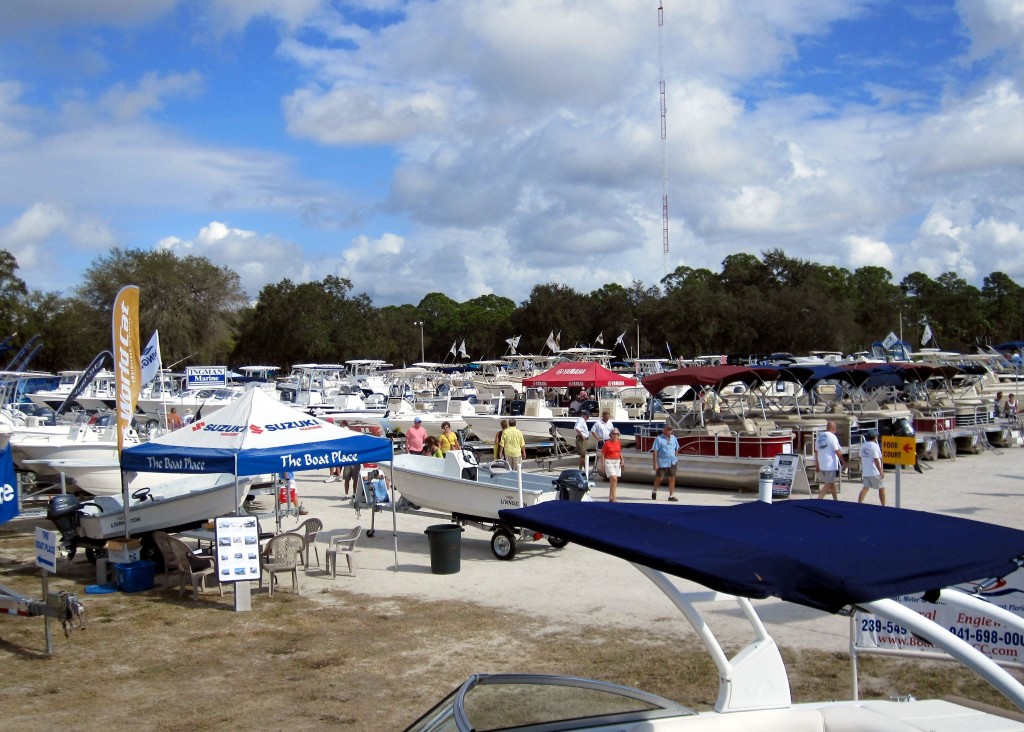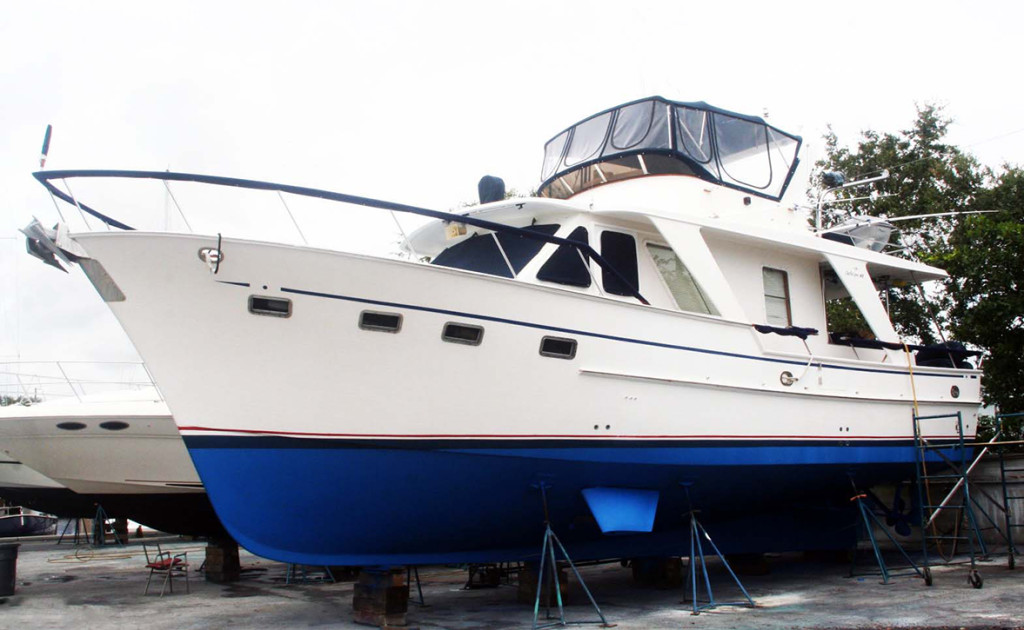Captain Terry says “The days are getting longer, giving more time to work the tides.
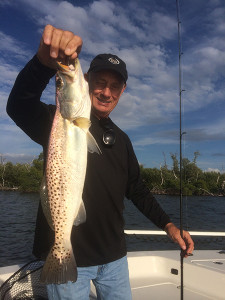 (Ft. Myers Beach to Charlotte Harbor) Prior to the cold front and the ‘Full Moon’, fishing for all of my clients was fantastic! Boat loads of Spanish Mackerel were all over areas of Bokelia and Foster Bay, just to mention two prime locations. Big hungry Seatrout were present in deep holes (4-6 ft) while small Seatrout, Crevalle Jacks were all around. We caught Redfish on incoming and outgoing tides at openings (deeper ‘cuts’) protecting grass flats. Mangrove Snappers and big Sheepshead were caught around pilings using small shrimps and Fiddler Crabs. My baits of choice for the Spanish Mackerel were small to medium size shrimps. Cut Pinfish, ‘jumbo’ shrimps and Ladyfish were more effective for the bigger Seatrout and Redfish. Artificial baits were effective as well for Spanish Mackerel, Seatrout, Snook, Crevalle Jacks and Redfish.
(Ft. Myers Beach to Charlotte Harbor) Prior to the cold front and the ‘Full Moon’, fishing for all of my clients was fantastic! Boat loads of Spanish Mackerel were all over areas of Bokelia and Foster Bay, just to mention two prime locations. Big hungry Seatrout were present in deep holes (4-6 ft) while small Seatrout, Crevalle Jacks were all around. We caught Redfish on incoming and outgoing tides at openings (deeper ‘cuts’) protecting grass flats. Mangrove Snappers and big Sheepshead were caught around pilings using small shrimps and Fiddler Crabs. My baits of choice for the Spanish Mackerel were small to medium size shrimps. Cut Pinfish, ‘jumbo’ shrimps and Ladyfish were more effective for the bigger Seatrout and Redfish. Artificial baits were effective as well for Spanish Mackerel, Seatrout, Snook, Crevalle Jacks and Redfish.
My father-in law, Bill Kern of St. Louis, Missouri is pictured here with a ‘giant’ Seatrout he landed just before dark on a ‘flat’ in Pineland.

 Also, pictured are friends and repeat clients from Marshalltown, Iowa. Roger Chase is shown with his catch of a nice size Spanish Mackerel. His wife Sally, is proudly displaying a big Seatrout she caught on the ‘flats’ north of Foster Bay. Their friends (also from Marshalltown), Dennis and Sondra Buffington are pictured with a couple of their catches. Dennis (‘Buff’); is holding a huge Spanish Mackerel while his wife, Sondra displays her first Bluefish. Over one hundred fish were caught that day. Needless to say; ‘we all had a blast!
Also, pictured are friends and repeat clients from Marshalltown, Iowa. Roger Chase is shown with his catch of a nice size Spanish Mackerel. His wife Sally, is proudly displaying a big Seatrout she caught on the ‘flats’ north of Foster Bay. Their friends (also from Marshalltown), Dennis and Sondra Buffington are pictured with a couple of their catches. Dennis (‘Buff’); is holding a huge Spanish Mackerel while his wife, Sondra displays her first Bluefish. Over one hundred fish were caught that day. Needless to say; ‘we all had a blast!
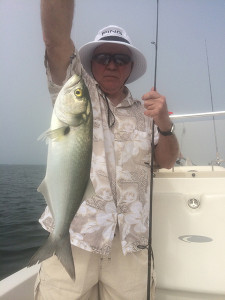
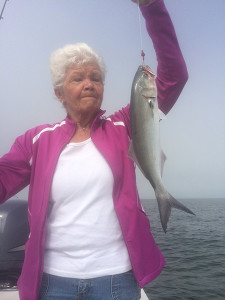
Once this last cold front passes, I feel the fishing should continue to be fairly good, as the water temperatures are rising. The days are getting longer giving anglers more time to work the tides.
This is Captain Terry Fisher of Fish Face Charters wishing you the best. Check out my websites at www.fishfacecharters.com and www.captainterryfisher.com for more articles and charter information. I am easily reached at 239-357-6829 or via email at [email protected].

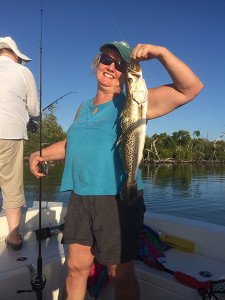
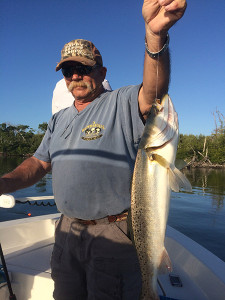
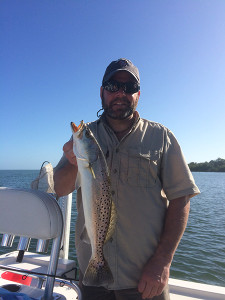
 (Ft. Myers Beach to Charlotte Harbor) My fishing article in the January Issue of the Lee County monthly publication; The Nautical Mile, was titled ‘Seatrout Fishing 101’. If you are having or was having trouble catching Seatrout, may I suggest that you go on line to that publication or my website and read the article. Since the cold fronts have passed the trout fishing has been fantastic utilizing those basic techniques and strategies discussed therein. Pictured here are some of the Seatrout that was caught by my charter clients within the last week. They were found in ‘pockets’ surrounded by ‘Turtle Grass’ at depths of 3′ to 5′ deep. Jayne Henderson and Bob Wunsch of Kewaskum, Wisconsin are proudly displaying their catches of of 22 and 23 inch Seatrout. Their friends, Todd Schmidt and his wife Jo Ann of West Bend, Wisconsin are holding their prize catches as well.
(Ft. Myers Beach to Charlotte Harbor) My fishing article in the January Issue of the Lee County monthly publication; The Nautical Mile, was titled ‘Seatrout Fishing 101’. If you are having or was having trouble catching Seatrout, may I suggest that you go on line to that publication or my website and read the article. Since the cold fronts have passed the trout fishing has been fantastic utilizing those basic techniques and strategies discussed therein. Pictured here are some of the Seatrout that was caught by my charter clients within the last week. They were found in ‘pockets’ surrounded by ‘Turtle Grass’ at depths of 3′ to 5′ deep. Jayne Henderson and Bob Wunsch of Kewaskum, Wisconsin are proudly displaying their catches of of 22 and 23 inch Seatrout. Their friends, Todd Schmidt and his wife Jo Ann of West Bend, Wisconsin are holding their prize catches as well.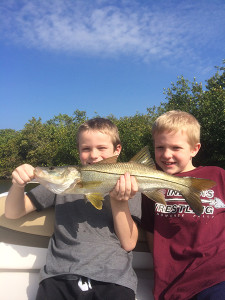 Snook, Redfish, Spanish Mackerel, Sheepshead and other species have also been very active. Ten year old Vince Young of La Crosse, WI. (on the left) had a special birthday treat when he landed this nice 22 inch Snook in the canals of Cape Coral. His cousin, Jack Brooks of Milwaukee, Wisconsin (pictured with him) was along to witness the catch.
Snook, Redfish, Spanish Mackerel, Sheepshead and other species have also been very active. Ten year old Vince Young of La Crosse, WI. (on the left) had a special birthday treat when he landed this nice 22 inch Snook in the canals of Cape Coral. His cousin, Jack Brooks of Milwaukee, Wisconsin (pictured with him) was along to witness the catch. South Seas Resort on Captiva Island was the January destination of the Cape Coral Cruise Club. Always a popular location, eighteen boats signed up for the cruise, however, illness or mechanical issues left eight boats unable to participate. The ten boats that made the cruise were MOONLIGHTER, Lee & Brenda Jetton – BOW’T TIME, Terry & Laurie Carlson – Y KNOT, Phil & Pat Kryger – MARKATE, Mark & Kate Lewis – DESPERADO, John Lynch & Debbie Schwab – DAISY MAE, Bob & Bonnie Martin – SHARON ANN, Len & Sharon Palmisano – SUNKISSED, cruise leaders Phil & Lyn Quick along with Phil’s brother Lee – HAPPY OURS, Gary & Kathy Taake, and STILL CRAZY, Jeff & Joanne Zeimer.
South Seas Resort on Captiva Island was the January destination of the Cape Coral Cruise Club. Always a popular location, eighteen boats signed up for the cruise, however, illness or mechanical issues left eight boats unable to participate. The ten boats that made the cruise were MOONLIGHTER, Lee & Brenda Jetton – BOW’T TIME, Terry & Laurie Carlson – Y KNOT, Phil & Pat Kryger – MARKATE, Mark & Kate Lewis – DESPERADO, John Lynch & Debbie Schwab – DAISY MAE, Bob & Bonnie Martin – SHARON ANN, Len & Sharon Palmisano – SUNKISSED, cruise leaders Phil & Lyn Quick along with Phil’s brother Lee – HAPPY OURS, Gary & Kathy Taake, and STILL CRAZY, Jeff & Joanne Zeimer. The second day at South Seas began with a marvelous pancake and scrambled eggs breakfast in the Chart Room prepared by Susan Herzog and Mary Ann Habich. No one left hungry. A number of the ladies then played cards in the Chart Room while the men explored the resort or fished off the fishing pier. Competing with a large group of aggressive pelicans for the fish, several men caught a number of keepers even with the cold water and gusty winds. One group rode the trolley to the shopping center, and another group walked to lunch.
The second day at South Seas began with a marvelous pancake and scrambled eggs breakfast in the Chart Room prepared by Susan Herzog and Mary Ann Habich. No one left hungry. A number of the ladies then played cards in the Chart Room while the men explored the resort or fished off the fishing pier. Competing with a large group of aggressive pelicans for the fish, several men caught a number of keepers even with the cold water and gusty winds. One group rode the trolley to the shopping center, and another group walked to lunch.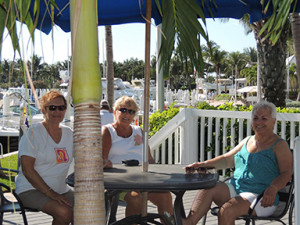
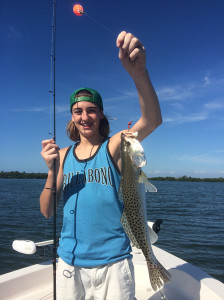 (Ft. Myers Beach to Charlotte Harbor) Regardless of the full moon cycle, the cool fronts have definitely slowed down the fishing as well as the ‘bites’. I have worked the flats and back country ‘on and off’ all last week and have found most success working the mangroves, pilings and structures for Mangrove Snappers, Sheepshead and Snook. Spanish Mackerel, Pompano and Seatrout still roam the flats but have been difficult to find during the cold spells. ‘Off-shore’ fishing and reports have been far and few between, due to the sporadic high winds.
(Ft. Myers Beach to Charlotte Harbor) Regardless of the full moon cycle, the cool fronts have definitely slowed down the fishing as well as the ‘bites’. I have worked the flats and back country ‘on and off’ all last week and have found most success working the mangroves, pilings and structures for Mangrove Snappers, Sheepshead and Snook. Spanish Mackerel, Pompano and Seatrout still roam the flats but have been difficult to find during the cold spells. ‘Off-shore’ fishing and reports have been far and few between, due to the sporadic high winds.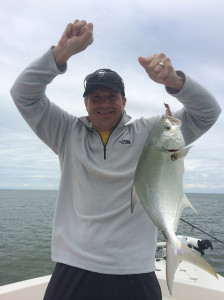
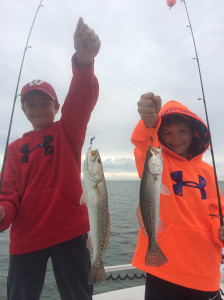
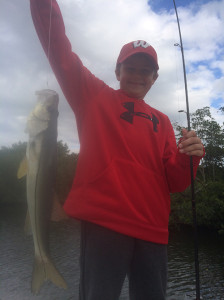
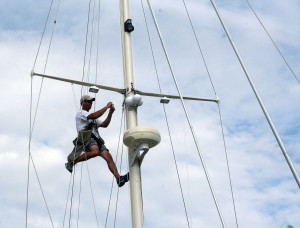 The best way to check your rigging is have a qualified rigger go aloft and check the rigging from mast head to the chainplates.
The best way to check your rigging is have a qualified rigger go aloft and check the rigging from mast head to the chainplates.
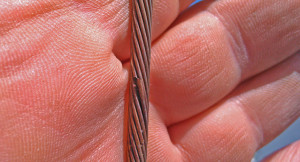
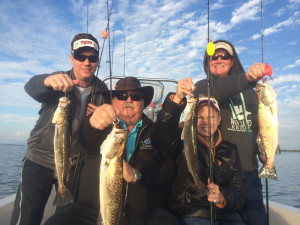
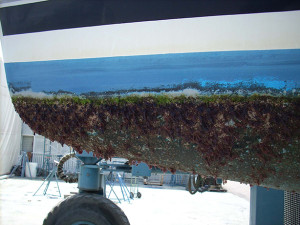 Why do bottom job prices vary so much from boat yard to boat yard? The labor cost is close to being the same (within 5%) and the cost of material should be the same for all yards. So what is the difference?
Why do bottom job prices vary so much from boat yard to boat yard? The labor cost is close to being the same (within 5%) and the cost of material should be the same for all yards. So what is the difference?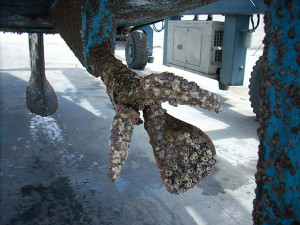 The Sailor Wharf quotes ONE price and we have been doing it way since 1978. The only time we charge extra for bottom prep is when the barnacles are so large that you may even have oysters on your bottom. If your bottom paint is flaking off, the hull which happens when the original paint was not properly applied or, more common, when the original paint is so old that it no longer has the adhesion to stick to the hull, we would recommend the total removal of the paint.
The Sailor Wharf quotes ONE price and we have been doing it way since 1978. The only time we charge extra for bottom prep is when the barnacles are so large that you may even have oysters on your bottom. If your bottom paint is flaking off, the hull which happens when the original paint was not properly applied or, more common, when the original paint is so old that it no longer has the adhesion to stick to the hull, we would recommend the total removal of the paint.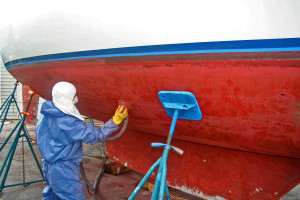 To properly prep the boat’s bottom, we use vacuum sanders. It is not only the right way of doing it environmentally, it is also more efficient, since the dust is immediately removed and the sandpaper can do its job properly. The worker can also see exactly where he is going, since there will be a clean surface while he is sanding. The next step is to wash all the dust off the bottom and the prop(s) and running gear gets painted with quality metal paint for that purpose. The rest of the bottom gets painted with your choice of anti fouling paint which, we either roll or spray on, with an airless paint sprayer depending on the customer’s choice. We move the boat stands so we can have the entire boat painted except for the keel blocks. When the paint is dry (usually 24 hours) we lift the boat and paint the keel block areas and inspect the bottom one last time. When the final paint touchup is dry, we launch the boat and wash the deck.
To properly prep the boat’s bottom, we use vacuum sanders. It is not only the right way of doing it environmentally, it is also more efficient, since the dust is immediately removed and the sandpaper can do its job properly. The worker can also see exactly where he is going, since there will be a clean surface while he is sanding. The next step is to wash all the dust off the bottom and the prop(s) and running gear gets painted with quality metal paint for that purpose. The rest of the bottom gets painted with your choice of anti fouling paint which, we either roll or spray on, with an airless paint sprayer depending on the customer’s choice. We move the boat stands so we can have the entire boat painted except for the keel blocks. When the paint is dry (usually 24 hours) we lift the boat and paint the keel block areas and inspect the bottom one last time. When the final paint touchup is dry, we launch the boat and wash the deck.